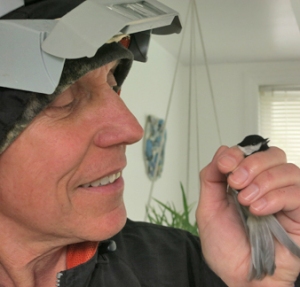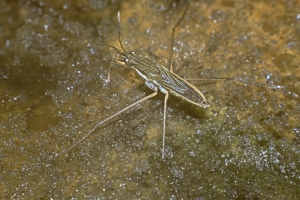People often ask us how many years songbirds can live. Sometimes it is hard to know for sure…is the Northern Cardinal you see at your feeder this year the exact same bird as the one you saw last year? Unless there is something distinctive about the look or actions of the bird, it’s hard to tell. The bird banding we do on our property is beginning to give us some data about this question, however. Shortly after noon today Bill arrived in the sunporch with a bird in hand and he (Bill) was grinning from ear to ear. “You know what’s special about this Black-capped Chickadee?” he asked me. Although I thought most of the Black-caps had already traveled to their more northern breeding grounds, I could not spot anything out of the ordinary about this little guy. So I admitted I had no clue.

Bill announced, “We banded him on the very first day we ever banded here—December 10, 2010!” So that little bird is at least 5 years old…more if he was born before 2010! Although our place will not be his (or her?) summer home, it felt great to know that he had survived so long and that our feeders were part of his migration path…again. UPDATE: Shortly after 3 on the same day, Bill again arrived in the sunporch with the same grin and a different bird. He was holding a Tufted Titmouse, all pecks and bites and tough-guy yelling (the bird, not Bill). We had also banded him on the first day we ever banded here, Dec. 10, 2010. This male is the first bird listed on the page of size 1B bands, so he might even have been the very first bird ever banded here! He is at least 5 years old, if not more. Titmice don’t migrate so he is one that we have been hearing year-round. And judging by the number of other Titmice we hear nearby, he is doing quite well at finding mates and providing new generations.







